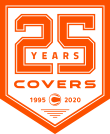When betting tennis odds the surface that is being played on must be taken into account. Covers Expert Tennis Insiders break down the effects each surface type has on the game and gives tips on how to bet them accordingly.
Clay vs Grass Surface Characteristics
- Clay is slower and higher bouncing while grass is faster and lower bouncing.
- Clay suits players who can produce heavy topspin, which in turn means they can produce angles and hit through the clay, as flat ball striking doesn't penetrate through a clay court.
- Nadal's ridiculous topspin forehand is famous for it's success on clay, constantly able to produce outrageous angle and kick, even more effective as being left-handed these balls were spitting up into a right-handers backhand wing, dragging him off the court and creating space for Nadal to attack.
- Grass suits big servers and those who use less extreme grips on their groundstrokes.
- Compare and contrast Nadal/Thiem & Wawrinka's results on the clay in Paris v grass in Wimbledon and a clear pattern emerges, those who use extreme forehand & backhand grips struggle to transition effectively on these surfaces.
Other Factors
There are other factors to consider like the short grass season in comparison to clay, meaning players don’t get the same time to fine-tune their games on grass, some of them playing zero warm-up events prior to Wimbledon.
Conclusion
While it’s easy to criticize oddsmakers' pricing in hindsight, the dependency on algorithms and serve/return statistics have shown to be unreliable in a sport like tennis, especially when surface characteristics are so vast. Knowing a player's game style, their favorite surface and their strengths/weaknesses on each surface is a far more profitable approach to this sport.




















